#ishwar chandra vidyasagar
Explore tagged Tumblr posts
Text
महान समाज सुधारक व उत्कृष्ट शिक्षाविद, प्रसिद्ध दार्शनिक और स्वतंत्रता सेनानी ईश्वर चंद्र विद्यासागर जी की जयंती पर शत्-शत् नमन।
0 notes
Text
Ishwar Ch Vidyasagar Contribution in the Spread of Education
Ishwar Ch Vidyasagar Contribution of for the spread of Women’s Education in India. Educationist – Ishwar Chandra Vidyasagar, Role of Ishwar Ch Vidyasagar for the spread of education Ishwar Ch Vidyasagar, a prominent social reformer, scholar, philosopher and educationist in 19th-century India, made significant contributions to the spread of women’s education. His efforts were particularly…

View On WordPress
#Biography Book#Hiranmoy Bandyopadhyay#Ishwar Chandra Vidyasagar#Subal Chandra Mitra#Women&039;s Education
0 notes
Text

Confession:
"I really don't like the way the Indian culture was portrayed in Kali: Call of Darkness. I hated the way people were still talking about Sati in 1983 when in reality it was banished in 1829. Also, widows were not forced to leave their homes once their husbands died. The Widow Remarriage Act was passed in 1856, which meant they were free to remarry even while still staying at their previous husbands' homes.
And what makes it even more insulting is that this story is based in Kolkata, and it was in fact in Bengal that Raja Rammohan Roy and Ishwar Chandra Vidyasagar, along with many others, started the movement for the banishment of Sati and passing of widow remarriage act respectively. "
65 notes
·
View notes
Note
do you believe hinduism can be reformed?
Honestly, in my opinion, no. For any reformation to take place you need an authoritative body and the pluralistic nature of hinduism will never allow for that. Even the scriptures contradict each other and don't have absolute authority. Any attempts at reformation will be countered by people who don't want that to take place, and since there is no organised authority the success of reformative practices will only have to rely on popular and mass appeal. And that is tricky. The only time a reformation has been achieved by mass appeal without forcible implementation by the government was the legitimization of widow remarriage by Ishwar Chandra Vidyasagar, and even that was possible largely only due to economic reasons.
Personally, as an atheist, reformation of hinduism does not concern me and I don't care about it; but if anyone cared enough about hinduism to want to reform it I'd never hold it against them. My only demand, as a citizen, is that hinduism or any other religion does not violate anyone's fundamental rights and human dignity, that no one is discriminated against on the basis of religion, and that religion does not have any relations with or influence over the government, administrative and political bodies. Ideally religion should be confined only in the personal and social space, and should have nothing to do with politics. Governing bodies everywhere should be compulsory secular.
6 notes
·
View notes
Text
History of Bangladesh
1. Ancient Bengal (Before 1204 AD)
Prehistoric Bengal:
The history of Bengal dates back to ancient times, with archaeological evidence of human settlements dating to around 4000 BC. The early inhabitants were proto-Australoid, Tibeto-Burman, and Dravidian people. Bengal's history was largely shaped by the Ganges-Brahmaputra delta, which fostered trade and agriculture.
Vedic and Mauryan Period:
During the Vedic period, Bengal was known as "Vanga," and it is mentioned in early Sanskrit literature. Bengal was later integrated into the Mauryan Empire under Emperor Ashoka (3rd century BC), who promoted Buddhism across his vast empire. After the fall of the Mauryan Empire, Bengal was ruled by several local dynasties, including the Pundras and the Samatatas.
Gupta Empire and Bengal's Flourishing Culture:
During the Gupta period (320-550 AD), Bengal became an important cultural and political region. The Guptas, with their capital in Pataliputra, dominated much of northern India, including Bengal. The Buddhist Pala Dynasty (8th-12th century AD) succeeded the Guptas in Bengal, ushering in an era of prosperity. The Palas were great patrons of Buddhism and established universities like Nalanda and Vikramshila.
The Sena Dynasty:
The Hindu Sena dynasty (c. 1095-1204 AD) replaced the Palas. The Sena rulers were patrons of Brahmanical Hinduism and played a key role in shaping Bengali culture and society. They were the last major Hindu rulers of Bengal before the Muslim conquest.
2. Medieval Bengal (1204–1757 AD)
Early Muslim Conquests:
The Muslim conquest of Bengal began with the Turkish general Bakhtiyar Khalji’s invasion in 1204. Khalji’s forces defeated the Sena dynasty, and Bengal was gradually absorbed into the Delhi Sultanate. Over the next several centuries, Bengal became a key region in the Islamic world, ruled by various Muslim dynasties, including the Bengal Sultanate (1352–1576), which was known for its wealth and cultural diversity.
The Bengal Sultanate:
The Bengal Sultanate flourished during the 14th and 15th centuries as an independent Muslim kingdom. It was a center of trade, culture, and learning, connecting the Indian subcontinent with the broader Islamic world. The Sultans built architectural marvels, such as mosques and forts, many of which still stand today. The most prominent sultan, Ghiyasuddin Azam Shah, was a patron of Persian literature and established diplomatic relations with China.
Mughal Period (1576–1757):
The Mughals, under Emperor Akbar, annexed Bengal in 1576 after a protracted struggle. Bengal became one of the wealthiest provinces of the Mughal Empire due to its fertile lands and thriving trade. Dhaka was established as the capital of Bengal during the Mughal period and became a key center for commerce and craftsmanship, particularly in textiles. The Nawabs of Bengal, appointed by the Mughal emperors, effectively ruled the region, but they gradually gained autonomy.
3. Colonial Bengal (1757–1947)
British East India Company:
The turning point in Bengal’s history came with the Battle of Plassey in 1757, when British forces, led by Robert Clive, defeated Nawab Siraj-ud-Daulah. This marked the beginning of British control over Bengal and eventually over much of India. Bengal became the first region to come under direct control of the British East India Company. The company’s exploitation of Bengal’s resources, combined with heavy taxation, led to economic distress and famines, such as the Bengal Famine of 1770.
Bengal Renaissance:
Despite British exploitation, the 19th century saw a cultural and intellectual awakening in Bengal, known as the Bengal Renaissance. Influential figures such as Raja Ram Mohan Roy, Ishwar Chandra Vidyasagar, and Rabindranath Tagore played crucial roles in reforming society, promoting education, and fighting against social injustices like Sati and child marriage. Bengal became the epicenter of Indian nationalism, with movements like the Young Bengal Movement and the Brahmo Samaj gaining prominence.
Partition of Bengal (1905) and Reversal (1911):
In 1905, the British colonial administration, under Lord Curzon, divided Bengal into two provinces: East Bengal and Assam, and West Bengal. This decision, seen as a tactic to divide and weaken the growing nationalist movement, sparked widespread protests and boycotts. The partition was eventually reversed in 1911, but the seeds of communal tension between Hindus and Muslims had already been sown.
The Independence Movement:
Bengal was at the forefront of the Indian independence movement. Leaders such as Subhas Chandra Bose, Surya Sen, and Chittaranjan Das played significant roles in resisting British rule. The Quit India Movement of 1942 also found strong support in Bengal. However, communal violence between Hindus and Muslims escalated during this period, especially during events like the Calcutta Killings of 1946.
4. The Partition and Pakistan Era (1947–1971)
Partition of Bengal (1947):
With the end of British rule in 1947, Bengal was once again divided, this time along religious lines. The western part became the Indian state of West Bengal, while the eastern part became East Pakistan, a part of the newly-formed state of Pakistan. Despite being geographically and culturally distant from West Pakistan, East Bengal (East Pakistan) became part of a nation dominated by West Pakistan.
Discontent in East Pakistan:
East Pakistan’s relationship with West Pakistan was strained from the beginning. The people of East Pakistan felt marginalized and exploited by the political and economic policies of the central government in West Pakistan. The imposition of Urdu as the sole national language in 1948 sparked the Bengali Language Movement, which culminated in the deaths of several students in Dhaka on February 21, 1952. This day is now commemorated as International Mother Language Day.
Economic disparities between the two wings of Pakistan further fueled discontent. East Pakistan, despite being the more populous and resource-rich region, received far less development aid and political representation. The situation worsened when the government of Pakistan, under President Ayub Khan, pursued policies that favored the western wing at the expense of the east.
Rise of Bengali Nationalism:
By the 1960s, Bengali nationalism was on the rise, led by Sheikh Mujibur Rahman and his party, the Awami League. The demand for greater autonomy for East Pakistan grew stronger. In 1966, Sheikh Mujib presented the Six-Point Movement, which called for significant political and economic autonomy for East Pakistan. The movement gained widespread support, especially after the devastating Bhola Cyclone in 1970, which killed hundreds of thousands of people and was met with an inadequate response from the central government.
5. The Bangladesh Liberation War (1971)
1970 General Election:
In the general elections of 1970, the Awami League, led by Sheikh Mujibur Rahman, won a landslide victory in East Pakistan, securing 167 out of 169 seats allocated to the region in the National Assembly. This gave the Awami League an overall majority in the Pakistan National Assembly, but the ruling elite in West Pakistan, led by President Yahya Khan and Zulfiqar Ali Bhutto, refused to hand over power.
Operation Searchlight and the Declaration of Independence:
Tensions escalated, and on March 25, 1971, the Pakistan Army launched Operation Searchlight, a brutal crackdown on the people of East Pakistan. Thousands of Bengalis, including students, intellectuals, and political leaders, were killed. On the night of March 25, Sheikh Mujibur Rahman declared Bangladesh's independence, and the Liberation War began.
The Liberation War:
The war for Bangladesh’s independence lasted nine months, from March to December 1971. The Mukti Bahini (Liberation Army), comprised of Bengali military defectors and civilians, waged a guerrilla war against the Pakistan Army. India, under Prime Minister Indira Gandhi, supported the Bengali cause and provided training and arms to the Mukti Bahini. In December 1971, following a full-scale war between India and Pakistan, the Pakistan Army surrendered in Dhaka, and Bangladesh was born as an independent nation on December 16, 1971.
6. Post-Independence Bangladesh (1971–Present)
Early Years and Sheikh Mujib’s Leadership:
Bangladesh emerged from the war of independence devastated, with millions of lives lost and much of its infrastructure destroyed. Sheikh Mujibur Rahman, widely revered as the "Father of the Nation," became the first prime minister. His government focused on rebuilding the country, but the challenges were immense. Famine, economic instability, and political unrest plagued the early years of independence.
In 1975, Mujib introduced a one-party system through the BAKSAL (Bangladesh Krishak Sramik Awami League) party, which led to dissatisfaction among many factions. On August 15, 1975, Sheikh Mujib and most of his family were assassinated in a military coup, plunging the country into political chaos.
Military Rule and Political Instability:
Following Mujib’s
#each with a hashtag:#-#AncientBengal#VangaKingdom#PalaDynasty#SenaDynasty#MuslimConquestOfBengal#BengalSultanate#MughalBengal#BattleOfPlassey#BritishColonialBengal#BengalRenaissance#PartitionOfBengal#BengaliLanguageMovement#SixPointMovement#BangladeshLiberationWar#IndependenceOfBangladesh#SheikhMujiburRahman#PostIndependenceBangladesh#MilitaryRuleInBangladesh#ModernBangladesh
2 notes
·
View notes
Text
"What Brahman is cannot be described.
All things in the world - the Vedas, the Puranas, the Tantras, the six systems of philosophy - have been defiled, like food that has been touched by the tongue, for they have been read or uttered by the tongue.
Only one thing has not been defiled in this way, and that is Brahman.
No one has ever been able to say what Brahman is.
Brahman is beyond vidya and avidya, knowledge and ignorance.
It is beyond maya, the illusion of duality."
~ Sri Ramakrishna Paramhansa to Ishwar Chandra Vidyasagar
(The Gospel of Sri Ramakrishna/Vol 1 /Sunday, December 9, 1883/ WITH THE DEVOTEES AT DAKSHINESWAR (II))
3 notes
·
View notes
Text
Encouraging Women: India's Revolutionary Path
India's journey toward Women empowerment India has been revolutionary and is still changing the socioeconomic and cultural landscape of the country. Giving women equal access to education, work, decision-making, and opportunity in all areas of life is part of the idea of women's empowerment. India has made great progress in promoting this cause throughout the years, yet there are still obstacles in the way of attaining complete gender parity.

The Historical Background of Indian Women's Empowerment
India has a long history of strong, independent women. Women have been crucial in forming the country, from Sarojini Naidu's literary achievements to Rani Lakshmibai's courageous participation in the Indian uprising of 1857. However, patriarchal structures and sociocultural norms limited women's autonomy and rights for generations. Their potential was drastically constrained by customs like child marriage, dowries, and restricted educational opportunities.
With social reformers like Raja Ram Mohan Roy and Ishwar Chandra Vidyasagar fighting for women's rights, the movement for women's empowerment in India gained traction in the 19th and 20th centuries. The foundation for the current gender equality movement was established by these initiatives.
Government Programs to Empower Women
The Indian government implemented a number of laws and initiatives to empower women after gaining independence. Article 15 of the Constitution forbids discrimination on the basis of gender, and Article 39 stresses that men and women should be paid equally for equal labor. A number of flagship projects have been introduced in recent years:
Beti Padhao and Bachao: Addressing gender-based discrimination and advancing girls' education are the goals of this campaign.
The Ujjwala Yojana promotes health and lessens dependency by giving women from households below the poverty line access to LPG connections.
By offering financial support for commercial endeavors, the Stand-Up India Scheme encourages women entrepreneurs.
Women Helpline Scheme: Provides women who are victims of abuse or violence with round-the-clock support.
These initiatives have had a major impact on women's freedom and quality of life improvements.
The Foundation of Empowerment: Education
In India, women's empowerment is based on education. In recent years, the percentage of women who are literate has increased significantly, from just 8.86% in 1951 to over 70%. Girls' access to school has improved thanks in large part to government initiatives like Samagra Shiksha and Kasturba Gandhi Balika Vidyalaya.
There are still difficulties in spite of these developments. Concerns about socioeconomic dropout rates and gender inequality in higher education persist. A multifaceted strategy including community involvement, legislative changes, and financial incentives for families to send their daughters to school is needed to address these problems.
Employment Inclusion and Economic Empowerment
One essential component of women's empowerment is economic freedom. With more women occupying positions in a variety of industries, including technology, healthcare, and entrepreneurship, the number of women in India's workforce has been continuously rising.
Indian women's entrepreneurial spirit is demonstrated by the growth of women-led companies and businesses. Women now have opportunities to demonstrate their abilities and attain financial independence thanks to platforms like "Mahila E-Haat" and the Self-Employed Women's Association (SEWA). To guarantee a truly inclusive workforce, however, issues like unequal compensation, workplace harassment, and a lack of representation in leadership roles must be addressed immediately.
Well-being and Health
Women's empowerment requires access to healthcare. With initiatives like "Poshan Abhiyaan" and "Janani Suraksha Yojana," India has significantly improved maternal and child health. Maternal mortality rates and child and maternal malnutrition have decreased as a result of these efforts.
However, progress is hampered by the stigma associated with reproductive health and the lack of adequate healthcare infrastructure in rural areas. Campaigns for awareness, better facilities, and culturally competent healthcare services are all necessary to address these problems.
Dismantling Social Barriers
In India, empowering women also entails dispelling long-standing prejudices and social conventions. Issues of gender-based violence and harassment have gained attention thanks to campaigns against domestic abuse and movements like #MeToo. Laws like the Sexual Harassment of Women at Workplace Act (2013) and the Domestic Violence Act (2005) have given women the means to defend their rights.
Maintaining these initiatives requires a shift in public perceptions. Stereotypes can be broken down and gender sensitivity can be encouraged with the support of education and awareness initiatives aimed at both men and women.
Leadership and Political Representation
Another crucial aspect of women's empowerment is political engagement. With the help of leaders like Indira Gandhi, India's first female prime minister, and Pratibha Patil, the country's first female president, women in India have achieved incredible advancements in political leadership. Women's participation in local governance has expanded dramatically since Panchayati Raj institutions reserved 33% of their seats for them.
However, there is still a lack of representation in legislatures and higher political positions. Creating a conducive atmosphere through mentorship, training, and policy changes is necessary to encourage more women to enter the political sphere.
Technology's Contribution to Women's Empowerment
In India, technology has become a potent instrument for women's empowerment. The availability of smartphones, the internet, and digital platforms has created new avenues for social interaction, enterprise, and education. In order to close the digital divide and guarantee that women gain an equitable share from technical breakthroughs, digital literacy programs and initiatives such as "Digital India" are being implemented.
Women can now express their views, create networks, and look for assistance on online platforms. Campaigns on social media have effectively sparked community action and increased awareness of important topics.
Obstacles on the Way Forward
Despite the advancements, India still confronts a number of obstacles to women's empowerment:
Patriarchal Mindsets: Women's opportunities are still restricted by traditional attitudes and behaviors.
Gender-Based Violence: Human trafficking, honor killings, and domestic abuse are still common crimes.
Economic Inequalities: There is still a gender pay gap and restricted access to resources.
Urban-Rural Divide: In contrast to their urban counterparts, rural women frequently do not have access to healthcare, education, or work opportunities.
The Path Ahead
All facets of society must work together to achieve true women's empowerment in India. Important actions consist of:
Encouraging early education and knowledge of gender-sensitive issues.
Bolstering legal frameworks and making sure they are applied effectively.
Motivating males to take an active role as allies in the empowering process.
Utilizing focused strategies and initiatives to close the gap between urban and rural areas.
Conclusion
In India, empowering women is not just a goal but also essential to the overall growth of the nation. Stronger families, communities, and economies are a result of empowered women. Even though there has been a lot of progress, much more has to be done. India can unleash the potential of its women and create a more promising and inclusive future by cultivating an atmosphere of equality, respect, and opportunity.
#fashion show#high fashion#fashion#fashion photography#ramp walk#beautiful model#beauty pageant#beautiful women
0 notes
Text
Women Education in India
Education has been identified for ages as the very fundamental foundation upon which progress of a society can be made. In India, women education has been the cornerstone of the country's trek toward social and economic development. Despite ages of ordeals and challenges, India has gone a long way in fostering women's education. However, much still remains to be done in this direction as insurmountable barriers continue to prevent many women from getting good education.
The Historical Backdrop
Historically, women were held in great reverence for their knowledge and wisdom during the Vedic era. Scholars such as Gargi and Maitreyi earned an unerasable place in ancient scriptures. Gradually during the medieval period, education for women was restricted due to social, cultural, and political changes. It was limited only to the sections of the elite class.
The colonial period, however did provide reformers like Raja Ram Mohan Roy, Ishwar Chandra Vidyasagar, and Savitribai Phule, who began crusading for women's education. These people opened the doors for social reformist movements and girl schools.
Current Scenario of Women Education in India
Female literacy in India has improved remarkably in modern times. Literacy among women in the 2011 Census has increased to 65.46% from a total of 8.86% in the year 1951. Government initiatives like the Beti Bachao, Beti Padhao campaign and the National Scheme of Incentives to Girls for Secondary Education targeted bridging the gap between the genders in education.
Although these achievements are commendable, disparities still persist:
States like Kerala and Himachal Pradesh boast high literacy rates for women, while states like Bihar and Uttar Pradesh lag behind.
Girls in rural areas often face greater obstacles, including lack of infrastructure, distance from schools, and societal pressures.
Early marriage, child labor, and gender stereotypes continue to limit educational opportunities for girls in many communities.
Challenges to Women Education
Poverty remains a major factor, forcing families to prioritize boys' education over girls'.
Fear of harassment and violence will deter many parents from sending their girls to school.
Most schools do not have some basic facilities like separate toilets for girls. Their inability to attend school for some particular days during their menstrual periods will make it almost impossible to continue school education.
Girls are forced to drop out due to family commitments and societal pressure, mainly.
Education therefore becomes a 'trickle-down' effect that impacts both the individual and community. Some of the major impacts are:
Better-educated women are more likely to join the workforce, paying into the economy.
Educated women make better health decisions for themselves and their families.
-Education allows for independence and thinking; women can contest and challenge obnoxious norms and seek equality.
"The simple increase of a year in secondary education for girls would increase their future earnings from 15% to 25%.
In order to attain true gender parity in education, India has to address systemic barriers so that every girl has the opportunity to learn. Some of those steps are:
Safe, accessible, and well-equipped schools must be provided everywhere, especially in rural or remote locations.
Sensitive campaigns and outreach programs have to be sensitized within communities on the value of women's education.
And most importantly, strict enforcement of child marriage and gender-based discrimination laws.
Expanding scholarship and financial aid for girls from disadvantaged backgrounds.
Women's education in India is not a social but a national priority. It has the potential to change not only individual lives but also weaves a new fabric of society. A future that could be achieved with every girl being able to dream, aspire, and achieve is just around the corner.
0 notes
Text
Ishwar Chandra Vidyasagar
youtube
0 notes
Text

Ishwar Chandra Vidyasagar (1820–1891) was a prominent social reformer, educator, and philanthropist whose contributions played a vital role in shaping modern India. Renowned for his advocacy of women’s rights and education, Vidyasagar’s legacy is characterized by his relentless pursuit of social justice and his commitment to educational reforms.
0 notes
Text

Send from Sansgreet Android App. Sanskrit greetings app from team @livesanskrit .
It's the first Android app for sending @sanskrit greetings. Download app from https://livesanskrit.com/sansgreet
Ishwar Chandra Vidyasagar.
Ishwar Chandra Vidyasagar (26 September 1820 – 29 July 1891), born Ishwar Chandra Bandyopadhyay, was an Indian educator and social reformer. His efforts to simplify and modernise Bengali prose were significant. He also rationalised and simplified the Bengali alphabet and type, which had remained unchanged since Charles Wilkins and Panchanan Karmakar had cut the first (wooden) Bengali type in 1780. He is considered the "father of Bengali prose".
#sansgreet #sanskritgreetings #greetingsinsanskrit #sanskritquotes #sanskritthoughts #emergingsanskrit #sanskrittrends #trendsinsanskrit #livesanskrit #sanskritlanguage #sanskritlove #sanskritdailyquotes #sanskritdailythoughts #sanskrit #resanskrit #ishwarchandravidyasagar #iswarchandravidyasagar #bandhyopadhay #educator #socialreformer #bengali #bengal #bengalitypography #bengalityping #bengaliprose #birsingha #westbengal #calcutta #kolkata #celebratingsanskrit
#greetingsinsanskrit#sanskritgreetings#sanskrittrends#trendsinsanskrit#livesanskrit#sanskrit#celebratingsanskrit#incredibleindia
0 notes
Text
The Hindu Widow Remarriage Act of 1856 was a law made by the British government in India to help Hindu widows. Before this law, widows were not allowed to remarry and were treated badly by society. Social reformers like Ishwar Chandra Vidyasagar worked hard to change this. The Act allowed widows to remarry and made sure that children from these marriages were considered legal. It also protected the widows' rights to property and inheritance. . . 🚀 Stay updated on current affairs, motivation and important notes for free. Join our telegram:➡️ https://t.me/breakthroughpoint_001 . .
hinduwidowremarriageact #1856 #socialreform #ishwarchandravidyasagar #britishindia #widowrights #indianhistory #womenrights #propertyrights #widowstrong #remarriage #onthisday #onthisday2024 #onthisdayinhistory #historylovers #nda #ssb #cds #upsc #defenceaspirants
0 notes
Text
Latest GK 50+ Indian History Questions 2023 :-
1). Where did British first open their factories in Eastern part of India?
A). Assam
B). Odisha
C). Bihar
D). Sikkim
Answer - ( B )
10). Who worte the book " Babuivah" ?
A). Raj Rammohan Rai
B). Pandit Rambai
C). Ishwar Chandra Vidyasagar
D). Rabindranath Tagore
Answer - ( C ) Read more:-
0 notes
Text

Awesome tribute to Ishwar Chandra Vidyasagar
Credit goes to unknown creator in social media.
1 note
·
View note
Text
On this day in Wikipedia: Tuesday, 26th September
Welcome, Bienvenue, Benvenuta, שלום 🤗 What does @Wikipedia say about 26th September through the years 🏛️📜🗓️?

26th September 2019 🗓️ : Death - Jacques Chirac Jacques Chirac, French politician, President of France (b. 1932) "Jacques René Chirac (UK: , US: , French: [ʒak ʁəne ʃiʁak] ; 29 November 1932 – 26 September 2019) was a French politician who served as President of France from 1995 to 2007. Chirac was previously Prime Minister of France from 1974 to 1976 and from 1986 to 1988, as well as Mayor of Paris from 1977..."

Image licensed under CC BY 4.0? by Christian Lambiotte
26th September 2016 🗓️ : Death - Toughie (frog) Toughie, last known Rabbs' fringe-limbed treefrog (h. fl. 2005) "Toughie was the last known living Rabbs' fringe-limbed treefrog. The species, scientifically known as Ecnomiohyla rabborum, is thought to be extinct, as the last specimen—Toughie—died in captivity on September 26, 2016. ..."

Image licensed under CC BY 2.0? by Brian Gratwicke from DC, USA
26th September 2013 🗓️ : Death - Mario Montez Mario Montez, Puerto Rican-American actor (b. 1935) "René Rivera, (July 20, 1935 – September 26, 2013), known professionally as Mario Montez, was one of the Warhol superstars, appearing in thirteen of Andy Warhol's underground films from 1964 to 1966. He took his name as a male homage to the actress Maria Montez, an important gay icon in the 1950s and..."
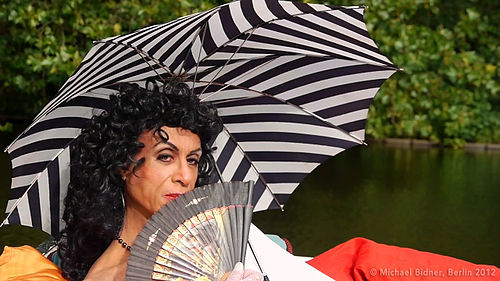
Image licensed under CC BY-SA 3.0? by Michael Bidner
26th September 1973 🗓️ : Event - Concorde Concorde makes its first non-stop crossing of the Atlantic in record-breaking time. "The Aérospatiale/BAC Concorde () is a retired Franco-British supersonic airliner jointly developed and manufactured by Sud Aviation (later Aérospatiale) and the British Aircraft Corporation (BAC). Studies started in 1954, and France and the UK signed a treaty establishing the development project on..."
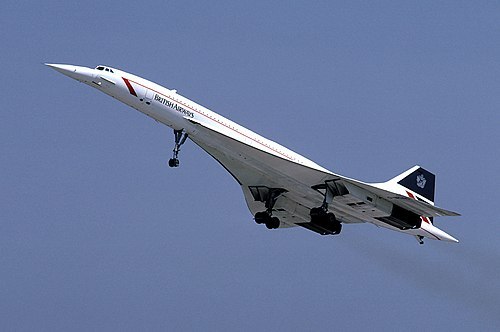
Image licensed under CC BY-SA 3.0? by Eduard Marmet
26th September 1923 🗓️ : Event - Occupation of the Ruhr The German government accepts the occupation of the Ruhr. "The Occupation of the Ruhr (German: Ruhrbesetzung) was a period of military occupation of the Ruhr region of Germany by France and Belgium between 11 January 1923 and 25 August 1925. France and Belgium occupied the heavily industrialized Ruhr Valley in response to Germany defaulting on reparation..."
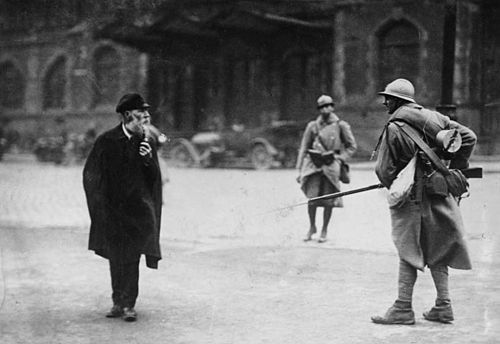
Image licensed under CC BY-SA 3.0 de? by
UnknownUnknown
26th September 1820 🗓️ : Birth - Ishwar Chandra Vidyasagar Ishwar Chandra Vidyasagar, Indian philosopher, painter, and academic (d. 1891) "Ishwar Chandra Bandopadhyay CIE, popularly known as Ishwar Chandra Vidya Sagar (Bengali: ঈশ্বরচন্দ্র বিদ্যাসাগর, lit. 'Vidyasagar, the Sea of Knowledge)'; (26 September 1820 – 29 July 1891), was an Indian educator and social reformer of the nineteenth century. His efforts to simplify and modernise..."
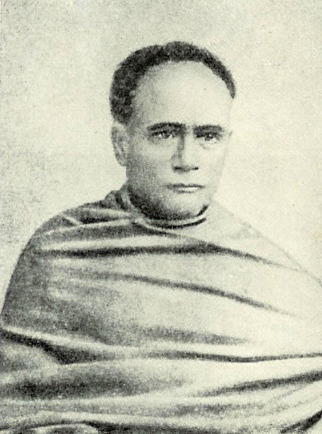
Image by Unknown authorUnknown author
26th September 🗓️ : Holiday - Christian feast days: Nilus the Younger "Nilus the Younger, also called Neilos of Rossano (Italian: Nilo di Rossano, Greek: Όσιος Νείλος, ο εκ Καλαβρίας; 910 – 27 December 1005) was a Griko monk and abbot from Calabria. He was the founder of Italo-Byzantine monasticism in southern Italy. He is venerated as a saint in the Eastern Orthodox..."
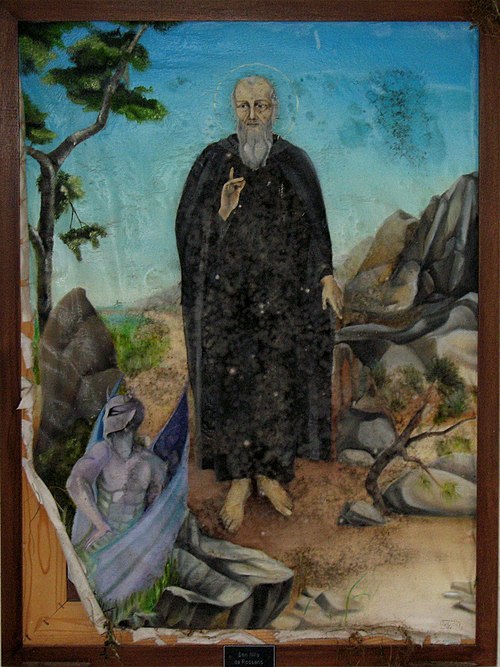
Image by GJo
0 notes